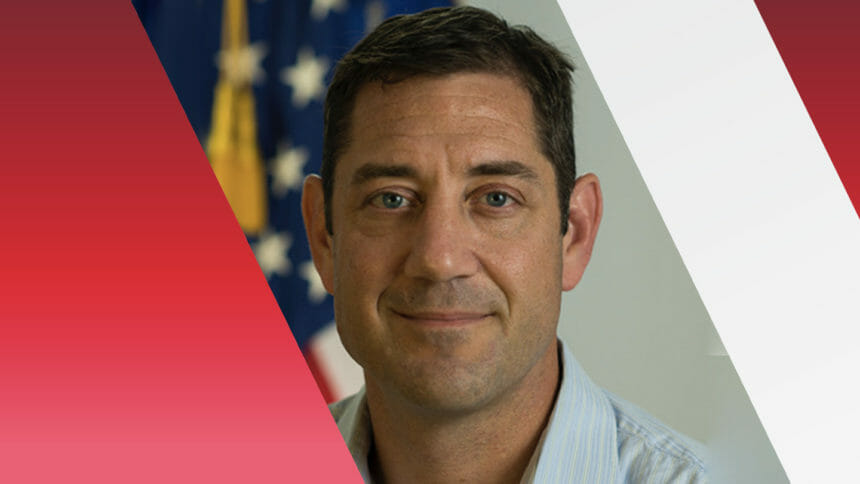
DENVER — Promoting a return to normalcy where pandemic conditions allow, a top Centers for Medicare & Medicaid Services official said Sunday that nursing homes will not return to the stringent isolation policies used during COVID-19’s early days.
Evan Shulman, director of the CMS Division of Nursing Homes, told attendees at the 2022 LeadingAge Annual Meeting that recent revisions to resident rights guidance — going into effect later this month — intend to prevent isolation and its potential clinical and cognitive consequences.
“If this ever happens again, we will not go back to a visitation restriction setting like we had previously,” Shulman said. “We have to be able to do better than that. When you’re working on your emergency preparedness plans, don’t write a plan that says how you’re going to look at [limiting] visitation if there’s an infectious disease outbreak. Write a plan that describes how you’re going to ensure visitation can still occur.”
In a wide-ranging, hour-long talk, Shulman addressed other upcoming changes to Rules of Participation guidance. He also tried to clear up lingering confusion about new Centers for Disease Control and Prevention guidance on infection control in healthcare settings, as well as his own agency’s related instructions to surveyors. He also discussed other key COVID strategies for operators as talk grows of a possible new wave of the virus.
While nursing home cases have hovered between 9,000 and 10,000 weekly for the bulk of the pandemic, the more recent average is in the 7,000 to 8,000 range, Shulman noted. But he urged providers to focus on getting both staff and residents up-to-date on vaccinations, including the bivalent booster where appropriate.
“It’s good to be below the average, but fall is coming on pretty strong,” Shulman said. “I don’t think we should get too complacent. We really need to be cautious about not forgetting everything that we’ve learned.”
Providers continued to express concern about mixed messaging even at this late point in the pandemic, with one audience member comparing trying to listen to CMS, CDC and state health officials to having three parents.
Shulman acknowledged the challenge of working in that type of regulatory environment, but he reinforced the idea that public health officials are largely trying to scale back or eliminate some previous measures with public immunity higher and transmission down for now.
“If you don’t see something in our guidance or CDC’s guidance, in regulation, that says don’t do this or don’t do that … you can do it,” he explained, as an attempt to ease providers’ fears about easing social distancing and other precautions that became normalized over the last two and a half years.
“Sometimes, people would focus too much on one thing and not the other thing,” he added. Physical distancing “wasn’t removed because it doesn’t work. It was removed because it’s kind of hard to get back to normal when we’re physical distancing, and we feel that we’re at the point where we’ve got good community-transmission levels out there.”
Other regulatory pressures
Shulman spent much of his presentation focused on the latest ROP guidance, which covers everything from resident rights to abuse reporting to infection prevention. Surveyors will begin using that guidance next Monday (Oct. 24).
He emphasized the need for providers to both understand and comply with the new rules, but also to dig into related data to set goals that could improve quality.
“I’m really pushing for us to be thinking holistically, big picture,” he told McKnight’s Long-Term Care News before the session. “We’re taking a real systemic approach to improving quality.”
In addition to encouraging additional training for staff on infection control and behavior health interactions and care, he also asked providers to see “how far” they can take Quality Assurance and Performance Improvement efforts.
He said vendors, MDS and EHR systems, and regional Quality Improvement organizations could help providers find actionable data points that drive better outcomes for patients.
“Our analysis works best when we dig deeper, when we take a layered approach,” Shulman said. “Please, dig deeper. Don’t do the minimum, and engage your medical directors. … I think you all get this. It’s just that we don’t seem to talk about quality. We seem to just get hung up on the other big deals, like staffing.”
Staffing remains key question
While Shulman discussed the inclusion of additional Payroll Based Journal staffing measures in Care Compare, he declined to speak about an ongoing study of a federal staffing minimum for nursing homes.
It, however, remained a key topic of concern for attendees.
In a separate session on rapidly changing federal policies, LeadingAge Vice President of Regulatory Affairs Janine Finck-Boyle said there had been “lots of questions, not a lot of answers” about the proposed mandate.
“We do not have an actual outline of what that’s going to look like, who it’s going to be, what disciplines will be part of that staffing mandate, what that number would be, who’s going to pay for it and most importantly, where are those individuals going to come from?”
Also in that session, LeadingAge leaders discussed workforce solutions, including retention efforts and potential immigration reform.
The meeting continues through Wednesday.
Related articles:
SNFs have made great strides in preventing, treating COVID, docs say
As closures kill community nursing homes, a new study confirms distance drives down needed visits
CMS: End to pandemic waivers helps nursing homes ‘redirect efforts’ to meet residents’ needs



